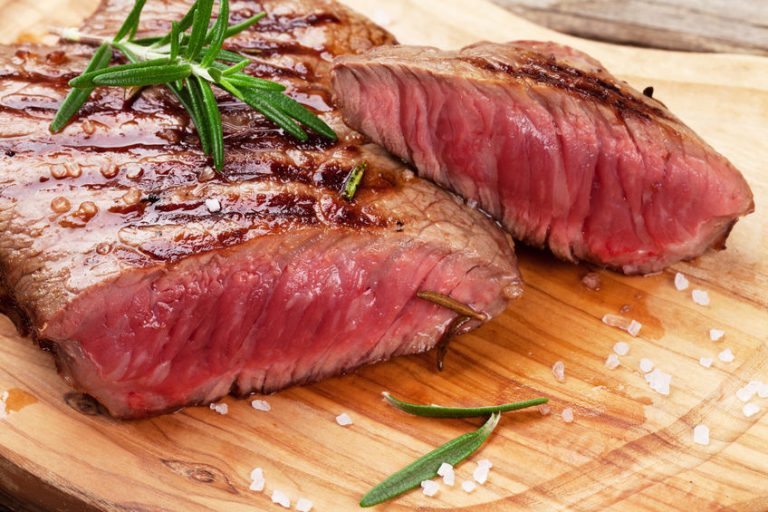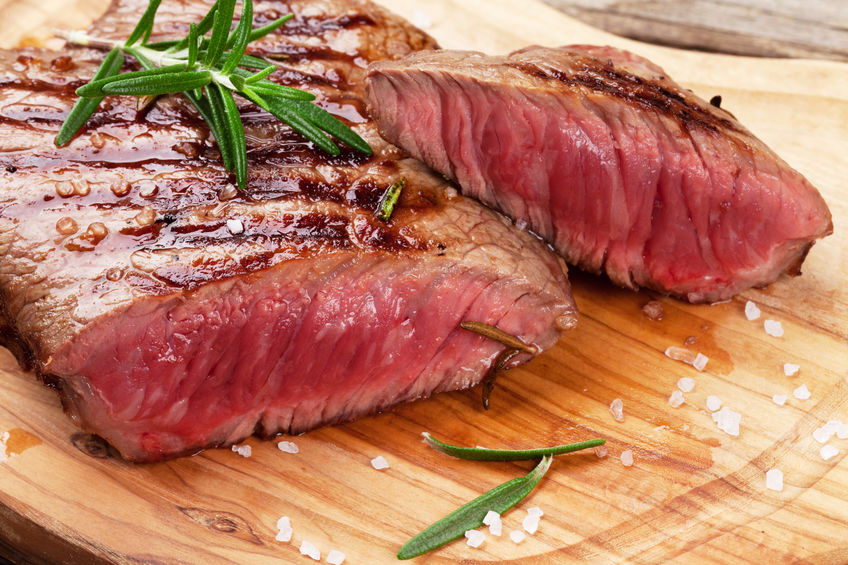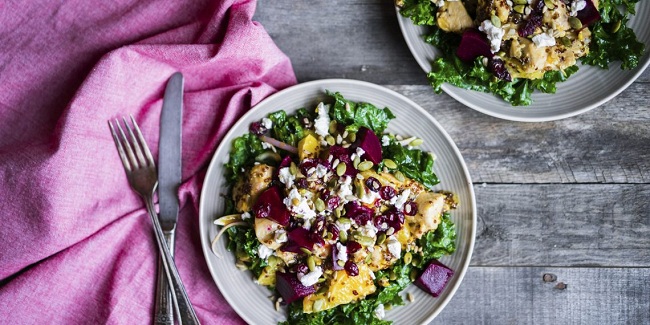Prepare the same steak as in a restaurant? Easily. The meat tenderloin will turn out to be wonderful in taste and appetizing in appearance if you learn these simple rules. And an open fire with a grate can be replaced with a frying pan.

- Secret # 1: you need the meat of a young bull, not a cow. For this steak, only bull meat is used. Not cows! Moreover, the animal must not be older than 20 months. Such meat is distinguished by its special juiciness and taste. And in its raw form, it looks a little dry, liquid should not flow out of it. The shade is deep red. If you touch it, the effect of a silky-smooth surface will appear. An important nuance: the meat for the steak should be matured, slightly rest in a cool room. Ideally dried. Fresh meat, only after slaughter, is not suitable for a steak – the dish can come out tough. Even marbled meat!
- Secret number 2: marbled meat is desirable, but not at all necessary. It is commonly believed that the most delicious steaks are made from marbled meat – VIP steaks, elite, gourmet cuisine. Thanks to the intramuscular fat, such meat looks like a marble pattern, and after frying the fat it gives a unique taste. Not all meat breeds of bulls are “capable” of this. In Russia, this is Hereford, Aberdeen Angus, which sellers can proudly tell you about.
- Secret number 3: Choosing the right piece. A steak is essentially a piece of meat that has been fried in a pan or over a fire. But meat is different from meat. Depending on the type of meat, steaks are divided into classic and alternative. The classic is carved from the dorsal or lumbar part of the bull. Each has its own name, usually, it is on the price tag. The main ones: ribeye, aka “cowboy”, club, tailbone – on a T-shaped bone, porterhouse, aka double steak, striploin, aka “New York”, and mignon. Each has its own flavor, color, and even juiciness. To choose the perfect one, you will have to try each one! However, they are all good.
- Secret number 4: choosing a pan with a thick bottom. A modern grooved beauty or grandma’s cast-iron punt is not the point. The main thing is the thick bottom because it accumulates heat and even gives it to the steak. Alternative steaks are marinated in red wine, soy sauce, tomato pulp, onion, or pineapple juice for at least half an hour before being sent to the fire. Then the meat should be dried with cooking napkins. Necessarily! It should come dry into the pan.
- Secret number 5: fry without unnecessary spices. The taste of a classic steak is formed by two spices: salt and black ground pepper. But if there is a craving for experimentation, you can add little caraway seeds and pink pepper. The pepper must be freshly ground. In the case of alternative steaks, add it when the meat is dry after marinade.
- Secret number 6: choose the degree of doneness. As you know, there are no comrades to taste. Therefore, steak masters use different degrees of roasting of meat, there are only four types of them. Knowing them will come in handy when communicating with a waiter in a restaurant. And for home cooking, it is important to know the temperature inside the finished piece. You will have to regulate it with a kitchen thermometer or experimentally. Depending on the degree of doneness, cook the steak for three to nine minutes.
- Secret # 7: fry in butter. Frying steak oil is the source of the flavor. It is customary to fry steaks in butter, the taste is softer. To make the steak as close as possible to the “live” taste of meat, you need to fry in odorless vegetable oil, especially if you like Too Well Done – a deep-fried steak without juice when the temperature inside reaches 100 ° C. This heat will burn the butter and ruin the steak.





